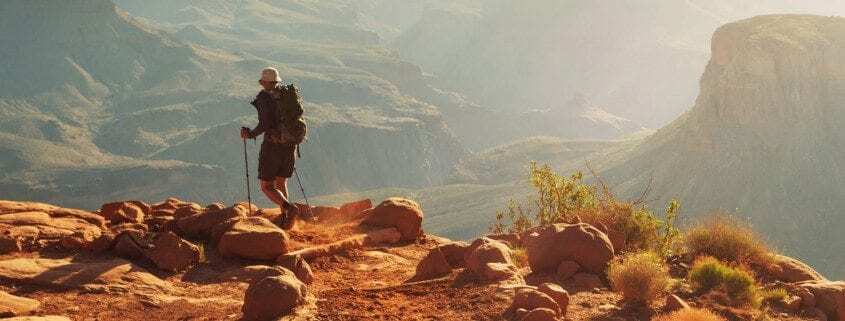Hiking at Grand Canyon Can Be Deadly in the Heat – What You Need to Know
Each year, visitors underestimate the dangers of hiking in the Grand Canyon—especially in the heat. Recently, several hikers have tragically lost their lives due to heat-related illnesses, dehydration, and overexertion. Temperatures on the canyon floor often exceed 110°F (43°C) in summer, making it one of the most deceptively dangerous hiking environments in the U.S.
If you’re planning a hike, especially in summer, don’t assume your fitness or experience will protect you. The canyon demands respect, planning, and a conservative approach.
Top 5 Things Not to Do When Hiking the Grand Canyon
1. Don’t Hike During Peak Heat (10 AM – 4 PM)
How fit are you? Really? Remember, it’s not just hot—it’s oven hot. Descending into the canyon in late morning or early afternoon is a serious mistake. Plan to hike early in the morning or late in the day, and avoid sun exposure during peak heat hours.
2. Don’t Underestimate the Hike Back Up
Hiking into the canyon may feel easy—but the real challenge is coming back up, often when temperatures are higher and your energy is lower. Many rescues and fatalities happen during the climb out. Always remember the rule: “Down is optional. Up is mandatory.”
3. Don’t Rely Only on Water
Staying hydrated is critical, but water alone isn’t enough. Your body needs electrolytes (like sodium and potassium) to function properly. Bring salty snacks or electrolyte tablets/drinks. Hyponatremia (low salt levels from drinking too much plain water) is a real and deadly risk.
4. Don’t Ignore Warning Signs
If you feel dizzy, nauseous, confused, or chilled—even if you’re sweating heavily—you could be in serious danger of heatstroke. Many hikers push through these signs thinking they’ll be fine. Don’t. Turn around, seek shade, and get help if needed.
5. Don’t Try to Reach the River and Back in One Day
This is the deadliest mistake visitors make. The hike to the river and back is a grueling 15–20 mile round trip with over 4,000 feet of elevation change. Even experienced hikers have died attempting it in one day. If you’re considering this, reconsider.
Final Word
Every year, heat kills in the Grand Canyon. This is preventable—but only if hikers are cautious, humble, and realistic about the conditions.
If you’re unsure, visit a Backcountry Information Center or talk to a ranger before heading out.
Your adventure should be memorable for the right reasons—not because it becomes a rescue.
If you’re looking to experience the beauty and drama of the canyon **without the blisters, dehydration, or risk of heatstroke**, there’s an easier—and safer—option: Grand Canyon: Rivers of Time in IMAX. It’s a 34-minute journey through the canyon’s past and present, all from the comfort of an air-conditioned theater.
Let the film take you deeper into the canyon’s history than any trail ever could—no hiking boots required.



 ChatGPT
ChatGPT